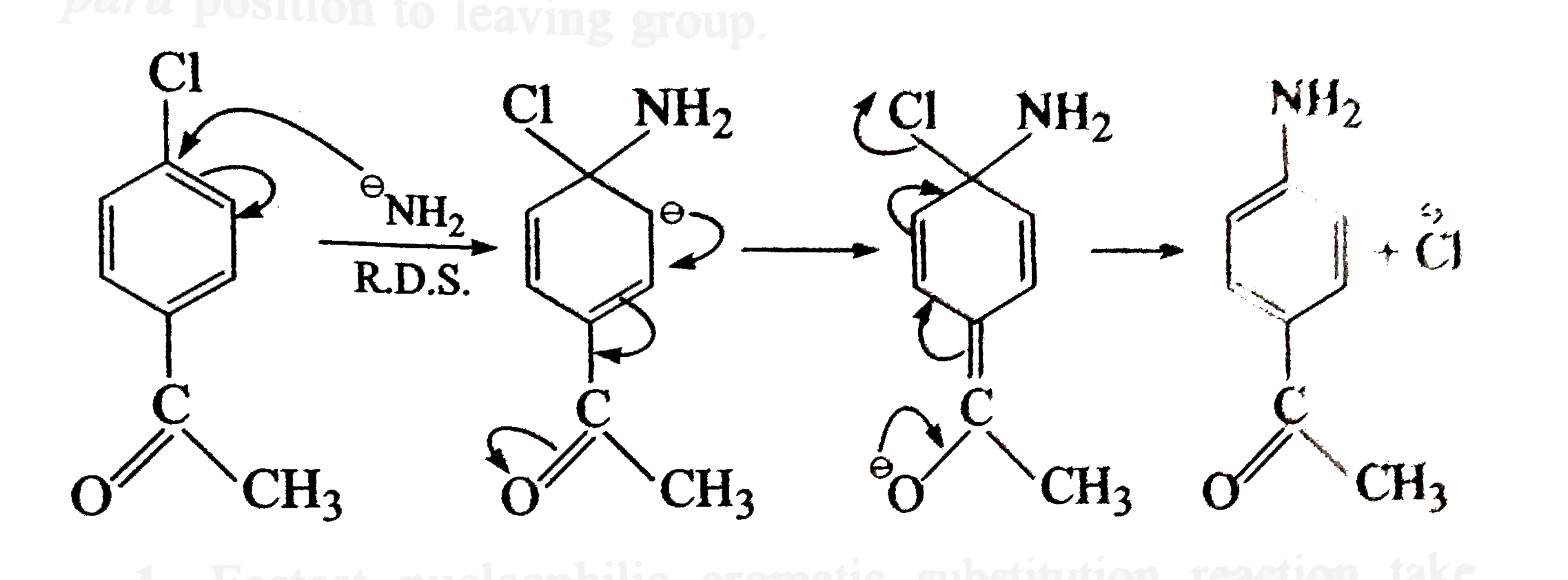Although chlorine is an electron withdrawing group, yet it is ortho-, para- directing in electrophilic aromatic substitution reactions. Why?
Chlorine withdraws electron through inductive effect and releases electrons through resonance. Through inductive effect, chlorine destablises the intermediate carbocation formed during the electrophilic substitution. The inductive effect is stronger than resonance effect in case of halogen which causes net electron withdrawal and thus causes net deactivation . The resonance effect tends at ortho - and para - position and hence makes the deactivation less controlled by stronger inductive effect and orientation is controlled by resonance effect.

Topper's Solved these Questions
- HALOALKANE AND HALOARENESBook:NARAYNAChapter:HALOALKANE AND HALOARENESExercise:EVALUATE YOURSELF - 1
Explore 6 Videos
- HALOALKANE AND HALOARENESBook:NARAYNAChapter:HALOALKANE AND HALOARENESExercise:EVALUATE YOURSELF - 2
Explore 5 Videos
- F-BLOCK ELEMENTSBook:NARAYNAChapter:F-BLOCK ELEMENTSExercise:CHECK YOUR GRASP
Explore 2 Videos
- HALOGEN COMPOUNDSBook:NARAYNAChapter:HALOGEN COMPOUNDSExercise:Passage 13
Explore 1 Video
Similar Questions
Although chlorine is an electron withdrawing group, yet it is ortho-, para- directing in electrophilic aromatic substitution reactions. Why?
View Solution(i). Why are alkyl halides insoluble in water. ?
(ii). Although chlorine is an electron withdrawing group, yet it is ortho and para directing in electrophilic aromatic substitution.
View Solution
Knowledge Check
For an electrophilic aromatic substitution reaction
AChlorine is o-p directing group and also electron releasing groupBChlorine is o-p directing group and also electron withdrawing groupCChlorine is meta directing group and also electron releasing groupDChlorine is meta directing group and also electron withdrawing groupWhich of the following is not a meta-directing group in electrophilic aromatic substitution?
A−SO3HB−COOHC−CND−NH2This section contains Assertion and Reason type questions. Each question has 4 choices (1), (2), (3) and (4), out of which only one ts correct.
Assertion (A) Chlorine is an ortho para directing in electrophilic aromatic substitution reaction.
Reason (R) Chlorine is an electron withdrawing group.ABoth Assertion and Reason are correct and Reason Is the correct explanation of the AssertionBBoth Assertion and Reason are correct but Reasan Is not the correct explanation of AssertionCAssertion Is correct but Reason is IncorrectDBoth Assertion and Reason are incorrect
Introduction OF Electrophilic Aromatic Substitution Reaction
View SolutionHalogens are deactivating yet ortho,para directing in electrophilic aromatic substitution. Which statements do not explain this ?
View SolutionFor a typical nucleophilic aromatic substitution reaction to take place .
1. Nucleophilic atom should be of oxygen nitrogen or sulphur.
2. Leaving groups should be halide.
3. There should be strong electron withdrawing at ortho and para position to leaving group.

Fastest nucleophilic aromatic substitution reaction take place in :
View SolutionWhich of the following stes of groups activates the ortho and para positions in electrophilic aromatic substitutions ?
View SolutionFor a typical nucleophilic aromatic subsitution reaction to take place.
(1) Nucleophilic atom should be of oxygen, nitrogen or sulphur.
(2) Leaving group should be halide .
(3) There should be strong electron withdarwing at ortho and para position to leaving group.

Fastest nucleophilic aromatic substitution reaction take place in :
View Solution

